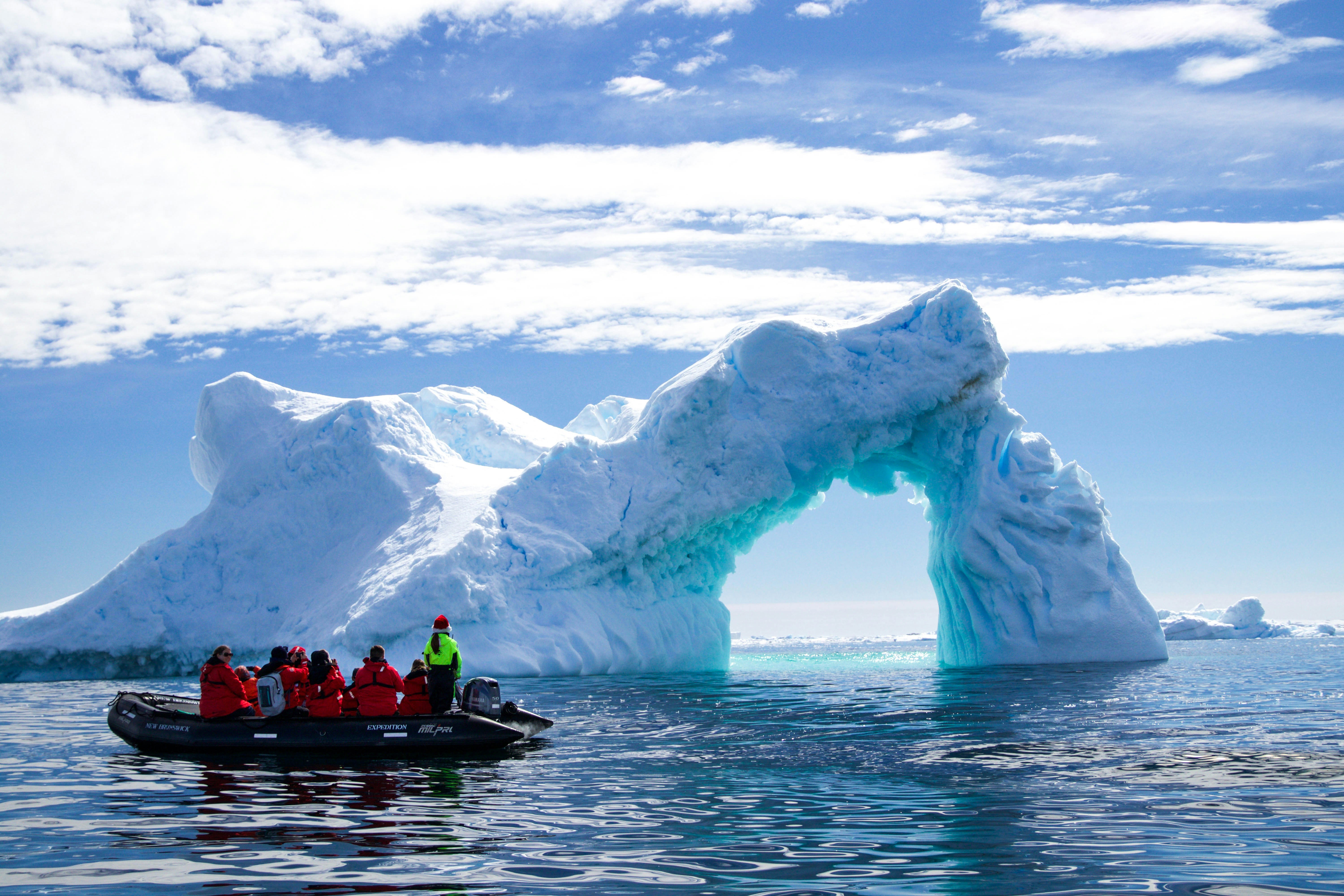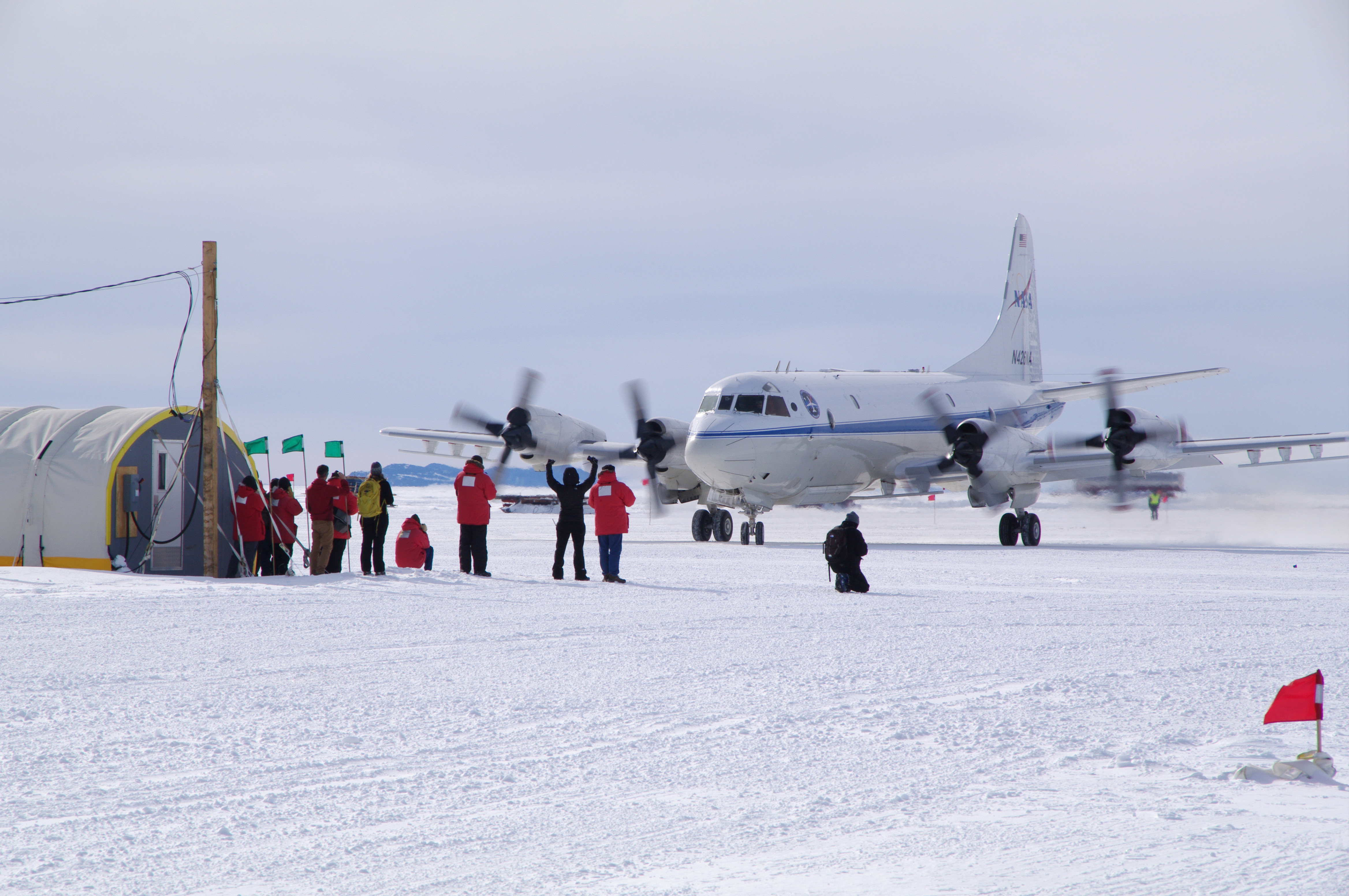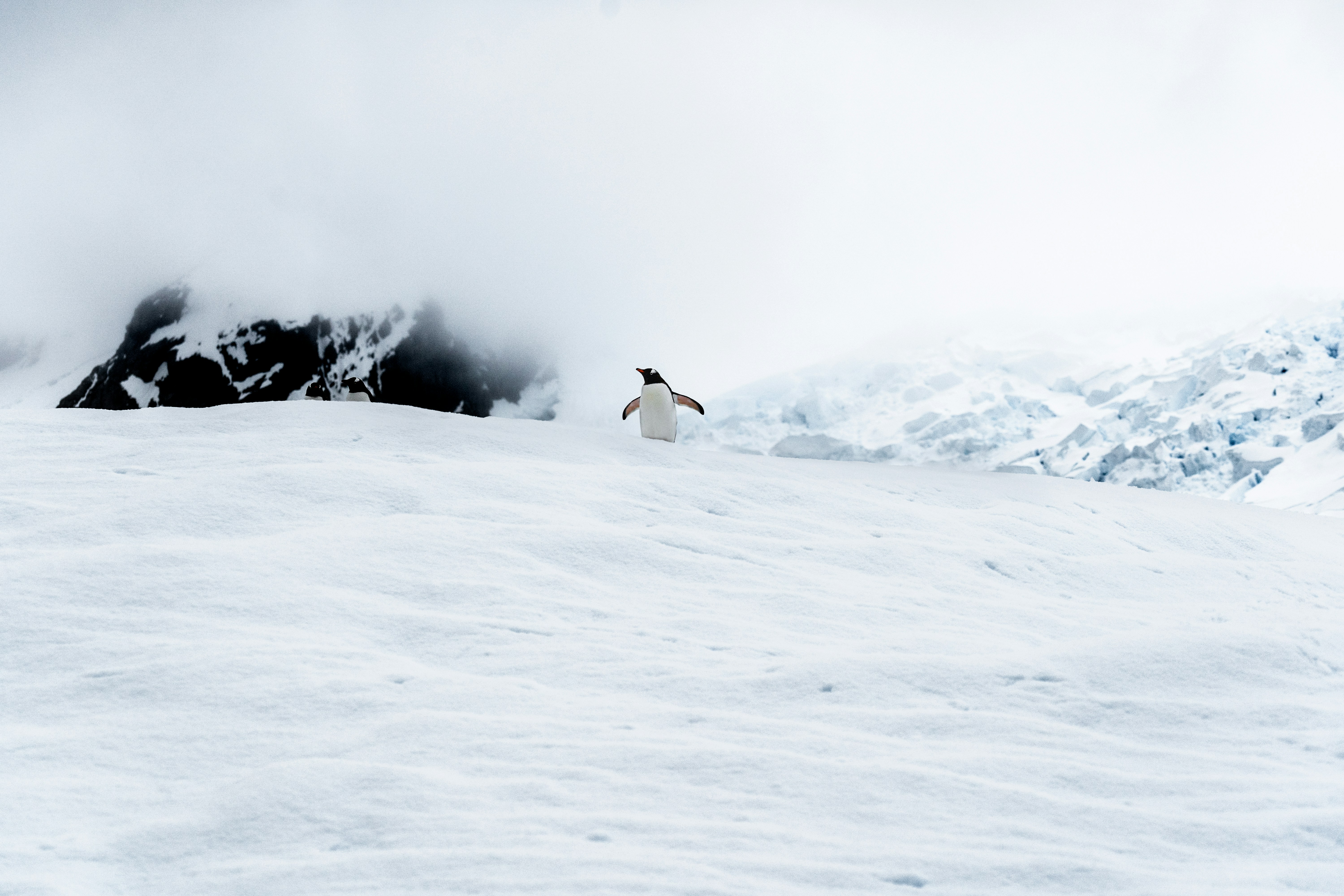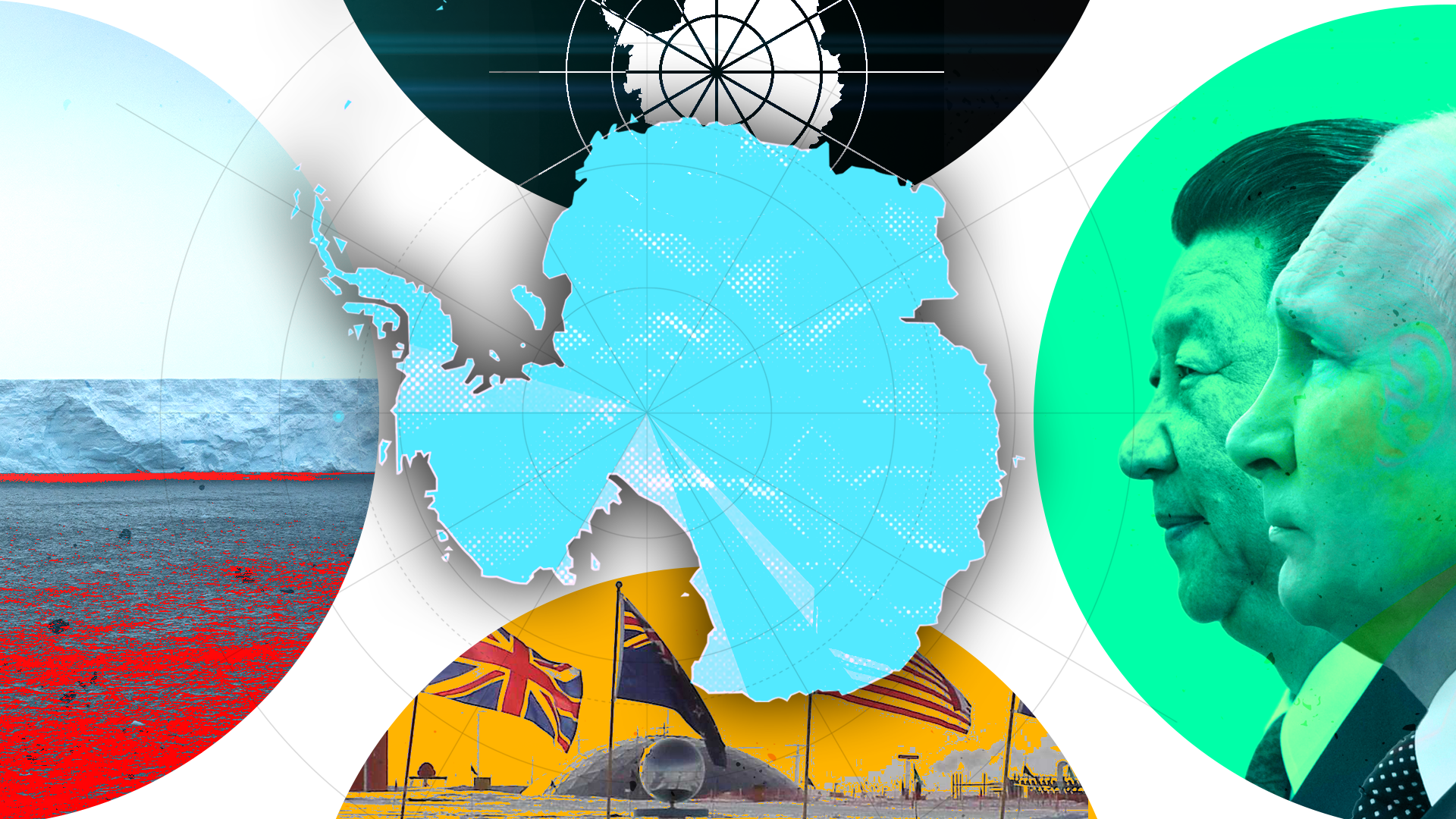The COVID-19 pandemic showed that Antarctica’s isolation and remoteness cannot protect it from events in the rest of the world.
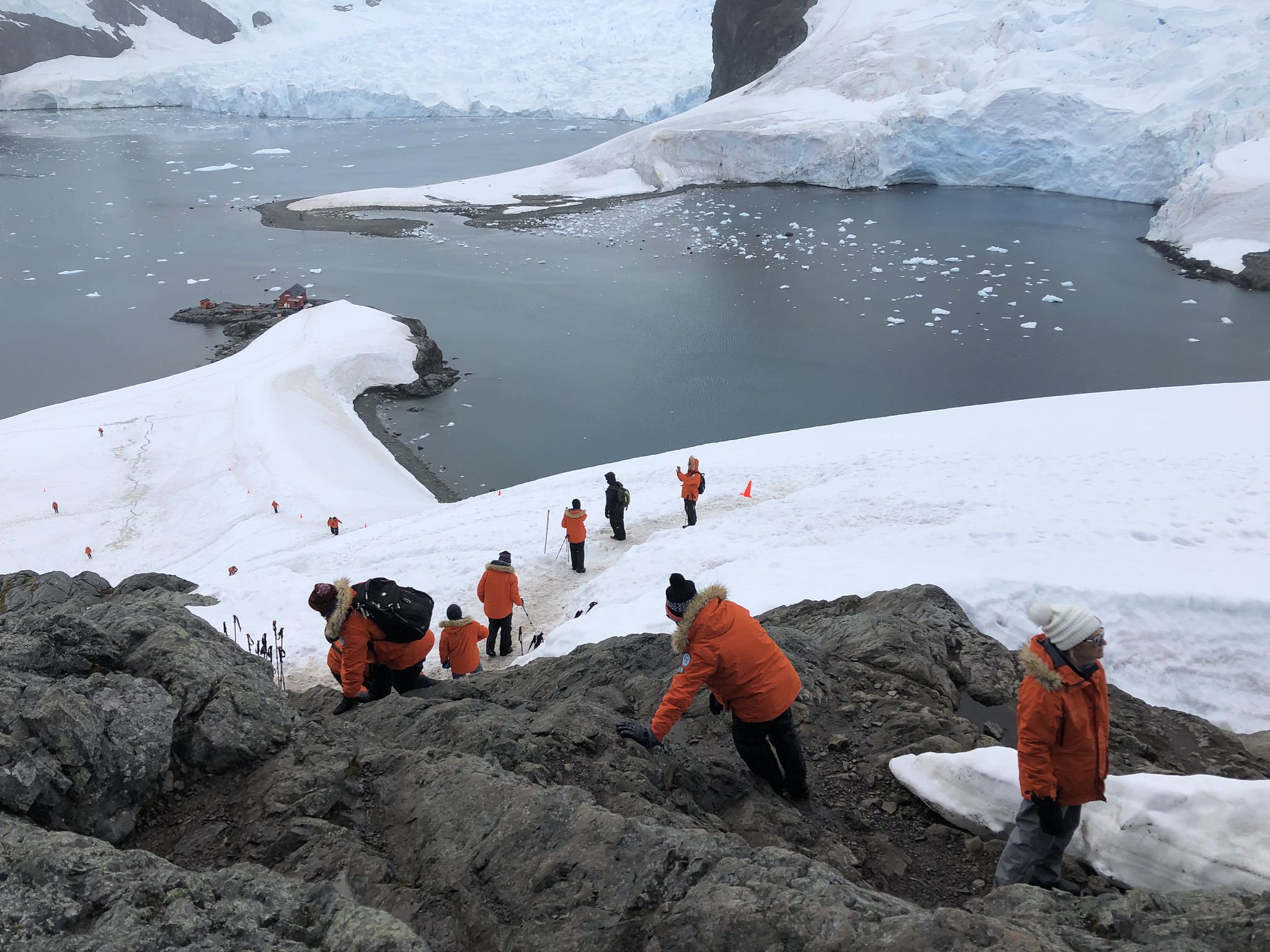 Life on Antarctic stations and in field camps is communal in all aspects. : ‘Walking toward the sea’ by National Snow and Ice Data Center via Flickr https://flic.kr/p/2jv6y4Q CC-BY-2.0
Life on Antarctic stations and in field camps is communal in all aspects. : ‘Walking toward the sea’ by National Snow and Ice Data Center via Flickr https://flic.kr/p/2jv6y4Q CC-BY-2.0
The COVID-19 pandemic showed that Antarctica’s isolation and remoteness cannot protect it from events in the rest of the world.
Antarctica has long operated by a different set of rules – a place apart from the turbulence of geopolitics.
The continent’s distance, isolation and extreme environment are one reason for this. But it’s also by design: the 1959 Antarctic Treaty declared the region would be used for scientific research and peaceful purposes only. Australia and New Zealand were among the original 12 signatories – along with both the US and the Soviet Union, at the height of the Cold War.
Today, 56 states are party to the treaty, and that ideal has come under increasing pressure as politics, technology, climate change and other factors have ramped up interest and engagement in Antarctica.
With the outbreak of a global pandemic in 2020, it became clear that Antarctica was no longer so separate from the rest of the world.
Daniela Liggett of the University of Canterbury in Christchurch, New Zealand has been studying Antarctica for over two decades. As the co-author of a recent paper on the effect of COVID-19 on science and tourism in the region, she shared her insights with 360info on the impact of the pandemic and why it matters.
Your research has looked at how COVID-19 has contributed to what you call “the demise of Antarctic exceptionalism”. What does this mean?
The Antarctic is one of the most remote regions on earth, with ecosystems uniquely adapted to the extreme climate. It is the only region without a permanent human population, and one that has been identified in scientific and popular literature, in the media and by its governance regime as unique. As a result, it has long been considered an “exceptional” place.
This idea of Antarctic exceptionalism has been fundamental to how the region is governed. Global environmental change, the discovery of pollutants such as microplastics in the Antarctic, and mounting evidence that Antarctic governance cannot be separated from what is happening elsewhere in the world are indicative of the demise of Antarctic exceptionalism. For example, the war in Ukraine has undeniable consequences on the effectiveness of a consensus-based governance regime, in which both Russia and Ukraine are decision-making parties.
The fact the international community did not succeed in preventing COVID-19 from appearing in the Antarctic serves as a reminder that the Antarctic is part of a complex, interconnected global system and cannot be treated as an altogether separate entity.
When did cases of COVID-19 first appear in Antarctica?
While the first infections were reported by tourists and staff on the cruise vessel Greg Mortimer as early as March 2020, the virus did not appear on the Antarctic continental landmass until December 2020, when maintenance workers at Chile’s Bernardo O’Higgins Station exhibited symptoms.
How did the pandemic affect research operations and tourism?
In the summer of 2020–21 (from December to February), Antarctic tourism essentially ceased. Only 15 visitors journeyed to the Antarctic that season – all of them on yachts from South America.
Many National Antarctic Programmes cancelled or delayed scientific fieldwork during the 2020–21 season, in an attempt to prevent the virus from appearing in Antarctica, and in line with travel restrictions around the world.
Travel was restricted to swapping out station personnel. Some long-term experiments and observations were undertaken by technicians, where possible. But many scheduled field activities were simply put on hold or cancelled.
What were the challenges trying to manage a pandemic in that environment?
Antarctica’s isolation – as well as the fact that most Antarctic stations do not have bespoke medical facilities – pose significant challenges for managing any highly infectious viral disease.
While the Antarctic itself is physically remote, life on Antarctic stations and in field camps is communal, with facilities such as dining rooms, tents, kitchens and toilets generally shared. As such, isolating infected people effectively is difficult, and infectious diseases are known to spread quickly at Antarctic stations and camps.
In addition, specialised medical help is often not at hand, and would require an evacuation from the continent – a risky undertaking that is dependent on the availability of helicopters or planes and ‘good’ weather.
How was it possible to treat people under such extreme conditions?
The extensive medical pre-screening that all Antarctic personnel undergo generally ensures anyone deployed to the Antarctic is of ‘good enough’ health for an extended period without medical support.
In addition, COVID didn’t arrive on the Antarctic continent until December 2020, when the most common variants of SARS-CoV-2 were less deadly or virulent.
The combination of having a generally healthy and (mostly) vaccinated station population and less virulent variants meant the required treatment for COVID-19 in the Antarctic was limited to easing symptoms with medication available at the stations. More serious cases were evacuated and attempts made to isolate infected individuals.
What is the relationship between the scientific community and the institutions governing Antarctica?
The 1959 Antarctic Treaty set aside the region for peaceful scientific collaboration, elevating the status of science to a “currency of diplomacy”. Antarctic science has a formal mandate and is a privileged activity that, ideally, also informs and underlies policy decisions on the Antarctic.
At the international level, Antarctic governance is largely facilitated through annual Antarctic Treaty Consultative Meetings (held this year in Kochi, India, May 20-30).
The scientific community is represented at these meetings by the Scientific Committee on Antarctic Research (SCAR). SCAR is recognised as a body that can provide high-quality scientific evidence for policy-makers to consider in their decision-making.
What are – or could be – the lessons to come out of the experience of the pandemic?
It highlighted some of the strengths and the weaknesses of Antarctic governance and Antarctic science and operations. It brought to the fore how vulnerable these systems are to global disruptions and showed that Antarctic governance does not seem to be a high priority for Antarctic Treaty Parties when dealing with crises – as the cancellation of the Antarctic Treaty Consultative Meeting in the first year of the pandemic showed.
The pandemic, and especially the research it stimulated, has made us yet more aware of existing inequities in academia, which are accentuated by global disruptions and crises such as a pandemic. It also showed that existing structures and processes, which were products of a pre-pandemic era when face-to-face meetings and events were the norm, were ‘antiquated’ when confronted with the realities of travel restrictions and the physiological and mental impacts of a pandemic.
It also prompted the review and revision of institutional structures and processes and facilitated a more generous exchange of research data and samples and the growth of formal and informal research networks, along with virtual mentorships and skill-building workshops for researchers and other stakeholders, and left Antarctic communities of practice in a better position for responding to a future pandemic.
Some of the positive effects relate to the greater utilisation and sharing of data internationally and to the increased use of online and hybrid workshops by the scientific community, which allow wider participation in scientific collaborations and networks by previously disadvantaged or isolated members of the Antarctic science community (such as those without sufficient funding to attend in-person conferences).
The pandemic also stimulated an increased and possibly more innovative use of remotely-sensed data which, in turn, reduces the human (carbon) footprint of Antarctic field research.
What are the challenges now for the Antarctic research community?
Retaining the positive outcomes of lessons learned from the pandemic will be a challenge, especially in today’s fiscally constrained environment. Collating and sharing data and making metadata available for Antarctic science also requires resourcing and continued efforts to establish and administer systems that overcome challenges posed by data being collected and stored in different formats and structures – this requires resourcing and collaboration.
In addition, global political challenges and unrest also affect Antarctic governance and Antarctic science funding.
We need to find a way forward that retains the strengths of an Antarctic consensus-based governance regime that considers and supports cutting-edge research in decision-making, and that pushes us beyond the current impasse by bridging the diverging interests and perspectives of Antarctic Treaty Consultative Parties. Here again, we may want to encourage research that explores how such an impasse could be overcome.
Daniela Liggett is an Associate Professor and Deputy Head of School of Earth and Environment at the University of Canterbury in Christchurch, New Zealand. She is a social scientist with a background in environmental management, Antarctic politics and tourism research. She is one of the two chief officers of the Scientific Committee on Antarctic Research’s (SCAR) Ant-ICON (Integrated Science to Inform Antarctic and Southern Ocean Conservation) research programme and is on the editorial boards of The Polar Journal and Antarctic Science.
Professor Liggett received funding from the Scientific Committee on Antarctic Research for the COVID-19 project and funding support for early-career researchers on her team from the Antarctic and Southern Ocean Coalition and the Trans-Antarctic Association New Zealand.
Originally published under Creative Commons by 360info™.



